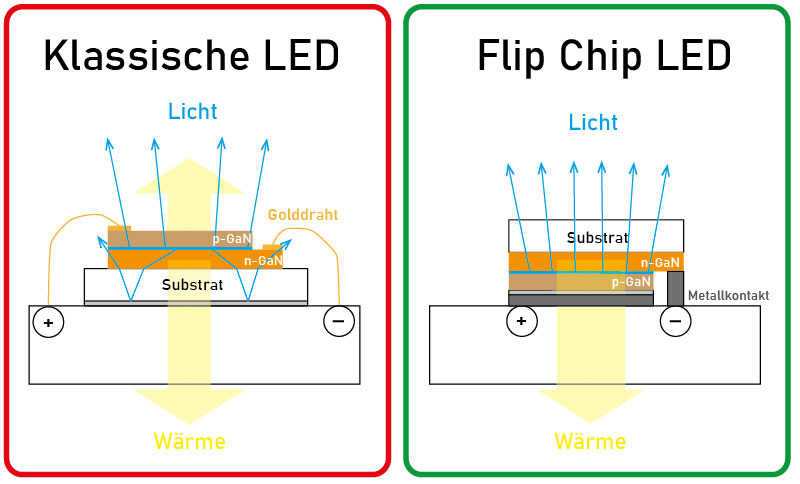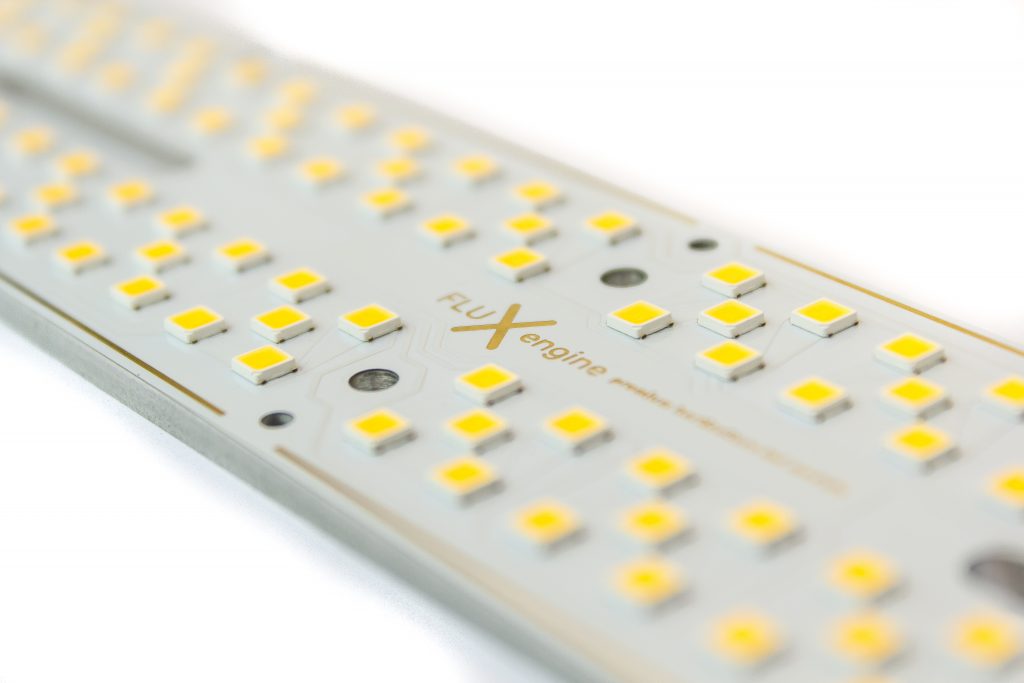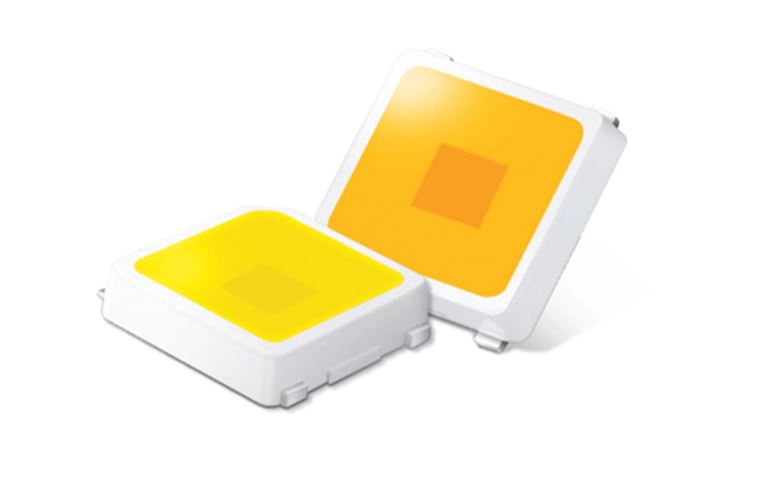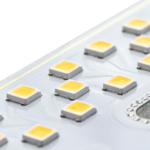LM301B turns the LED world upside down
With the release of the LM301B LED chip in mid-2017, Samsung has thrown the world of lighting pretty much into turmoil. With an efficiency of up to 220 lumens per watt, the package remains the leader in commercially available LEDs. Of course, efficient LEDs are especially interesting for grow lamps. That’s why we take a closer look at the chip. Here you can find the data sheet.
Internally, the LM301B is the heir to the previously sought-after LM561C. Both are mid-power LEDs, an area in which Samsung has been able to gain a lead in recent years. The secret of this success is the so-called flip chip technology in combination with advanced phosphor coating. Let’s explain it briefly!
Light-emitting diodes consist in their core of a "chip" which, depending on the material, begins to emit monochrome light at a certain voltage. These chips are normally installed in a housing and bonded to the contact points of the housing with gold wires. However, this has the disadvantage that the thin gold wires are very sensitive and can break at low pressure on the package. In addition, efficiency losses occur at various points due to reflections in the case.

In flip chip technology, this problem is simply bypassed by turning the chip over and binding the P and N conductors of the material directly to the metal contacts in the package. The result is a more durable and efficient LED. In addition, heat dissipation is significantly improved through the metal contacts. This sounds simple, but this technology requires advanced manufacturing techniques that have been optimized on the LM301B to set a new record for luminous efficacy.
Fluorescent coating turns the LM301B into a full-spectrum LED
Originally, light-emitting diodes, were only possible in the colours red and green. Other colors or even a full spectrum were not feasible. Only with the development of the gallium nitride semiconductors at the beginning of the 90s was it possible to realize blue LEDs. This wavelength contains photons that transport a lot of energy. If these energy-charged light particles are exposed to certain luminescent materials, they are excited to emit light of lower energy (= higher wavelength, i.e. green, yellow, red…). This is called luminescence. A layer of phosphors on top of the LED chip makes it possible to produce a full spectrum of light from blue light, which appears white to our eyes.
In luminescence, the quality of the materials is particularly important as to how efficiently the blue light is converted. It also determines the spectrum in which light is emitted. The same blue LED can achieve different colour rendering values and colour temperatures with different coatings. With the LM301B, Samsung offers a wide range of 70, 80 and 90 CRI, as well as different values between 2700K and 6500K colour temperature. For the FLUXengine , however, we prefer the colour temperature of 3500K. This is the ideal spectrum for the entire plant cycle. The colour rendering index of 80 offers the best compromise between efficiency and spectral quality.
LM301B for LED Grow Lights
We all know that lumens – as impressive as 223 lm/W may sound – are not the correct metric for plant lighting. But Samsung also published PPF values for some product lines in May 2018. So now you can say with certainty that the LM301B stands out among all white LEDs here as well – with 2.92 µmol/J at a current of 65 mA. If the LEDs are driven at a lower current, you can easily get more than 3.0 µmol/J.

LM301 Horticulture Version - LM301H!
Since the end of 2018, a new variant of the LM301 series has been announced, the LM301H. "H" as in "Horticulture" - that already sounds very promising. According to Samsung reports, the efficiency has increased by another 0.18 µmol/J compared to the LM301B. It is stated with 3.10 µmol/J (at reference values).
We were able to get to the Comparison of the first generation FLUXengine with the FLUXengine v2 we found an almost 5% higher efficiency, but we attribute this to the improved binning.
We only order pre-selected chips with the highest luminous flux, i.e. the SL Bin at 3500K, from Samsung. Have a look at the video how the single SMD components are mounted on the board!
Update May 2021: LM301B Evo is coming
Samsung has announced a new generation of LM301 LEDs. The new LM301B Evo and LM301H Evo feature improvements in phosphor conversion and reflection in the chip package, resulting in an efficiency increase of a good 5 % (up to 235 lm/W).
The LM301H Evo types are specified with a slightly increased efficiency of 3.17 µmol/J (5000K), respectively 3.2µmol/J ("Mint White" spectrum). This corresponds to an improvement of 2 -3 %.








1 thought on “Samsung LM301B LED Chip”
Pingback: DIY LED at Indoor Grow - build your own plant lamps